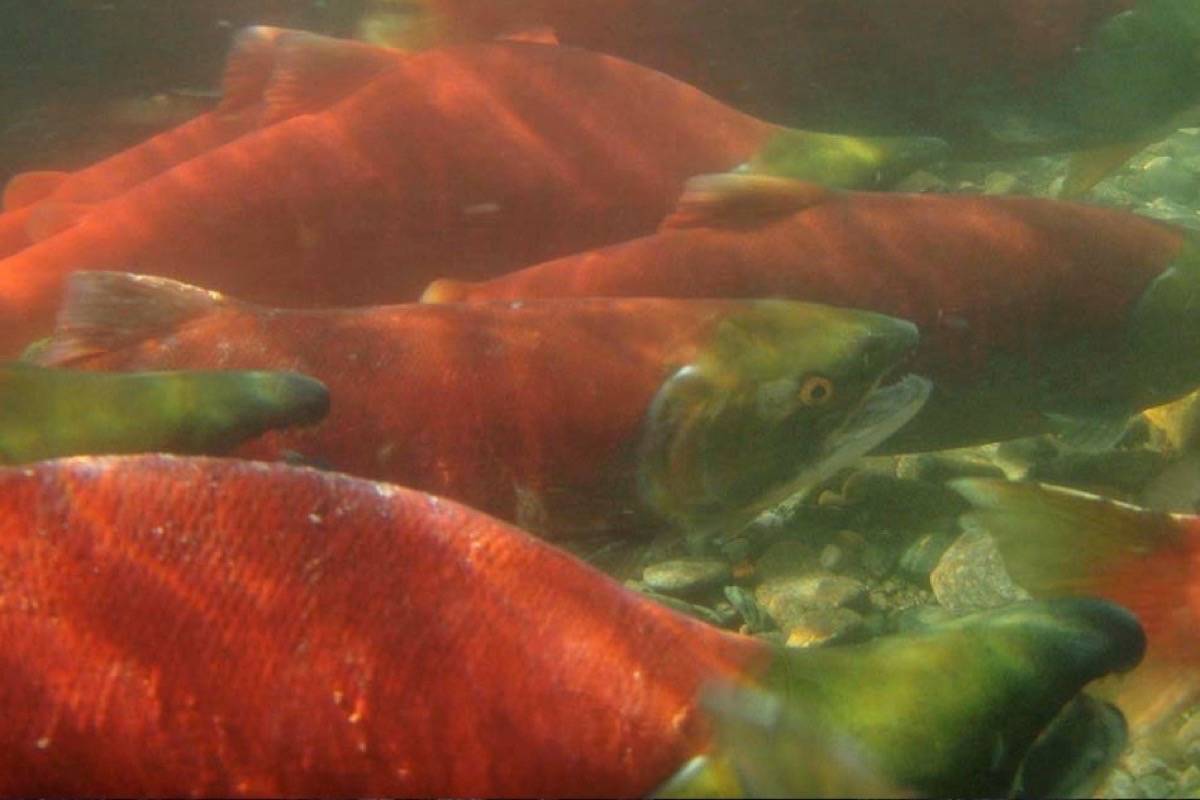Alaska’s Department of Fish and Game released its forecast for the 2021 salmon runs in the Upper Cook Inlet earlier this month, predicting that sockeye salmon runs will be slightly higher than last year while still falling well below both the five- and 20-year averages.
The 2021 forecast from ADF&G, released Jan. 22, estimates that about 4.37 million sockeye salmon will return to the Upper Cook Inlet, and approximately 2.37 million of those salmon will be available for harvest from all fisheries.
The 2020 sockeye salmon run saw 4.36 million fish return to the Upper Cook Inlet, which was 2% above the 2020 forecast of 4.27 million. The vast majority of sockeye salmon — 2.55 million — returned to the Kenai River, while 821,000 returned to the Kasilof River, 380,000 to the Susitna River and 74,000 to Fish Creek.
The 2021 forecast was determined using four different scientific models based on the habitat in question. The Kenai River return, for example, was estimated by using a sibling model that looked at the abundance of returning salmon of certain ages in past years to predict how many siblings of each age group would return this year.
The forecast for the Kenai River is about 2.33 million sockeye salmon, which is more than 1 million less than the 20-year average for sockeye salmon runs and 500,000 less than the five-year average.
The department also issued forecasts for four other salmon species in the Upper Cook Inlet. The commercial harvest for 2021 for these species is estimated to be 74,000 pink salmon, 127,000 chum salmon, 191,000 Coho salmon and 5,390 Chinook salmon.
The Chinook salmon — also known as king salmon — has seen low returns for the past several years.
This year, ADF&G’s preseason projection estimates that about 4,400 large king salmon (greater than 34 inches) will return to the Kenai River during the early run. This number falls within the optimal escapement goal of 3,900 to 6,600 large salmon, and as a result, the Kenai River king salmon sport fishery will start under the following general regulations:
Bait is prohibited, and only one single-hook line with an artificial lure may be used.
The bag and possession limit for king salmon greater than 20 inches is one. Any salmon greater than 24 inches cannot be removed from the water and must be released immediately.
The combined annual limit for king salmon over 20 inches is five fish, and that applies to all Cook Inlet Drainage waters. This includes a maximum of two fish from the Kenai River However, king salmon under 28 inches that are caught prior to July 1 do not count towards the annual limit. All harvested fish must be recorded on a harvest record card or a sport fishing license.
The bag and possession limit for king salmon less than 20 inches — also known as jack king salmon — is 10 fish per day and 10 in possession, which is in combination with coho, sockeye, chum or pink salmon less than 16 inches in length.
Regulations may be loosened or restricted during the season as determined by in season projections in order to meet the optimal escapement goal.
Reach reporter Brian Mazurek at bmazurek@peninsulaclarion.com.

